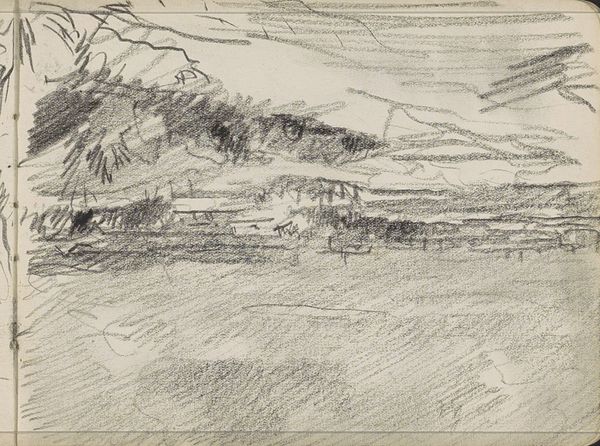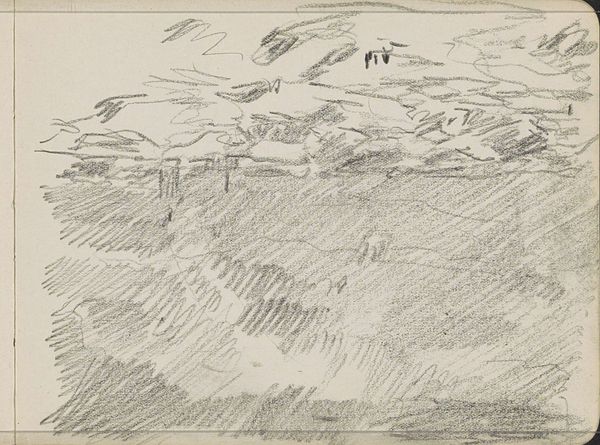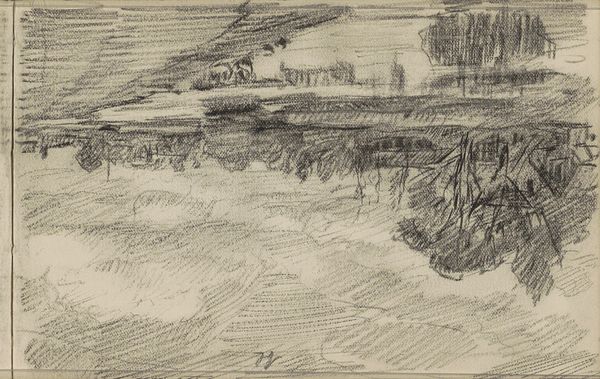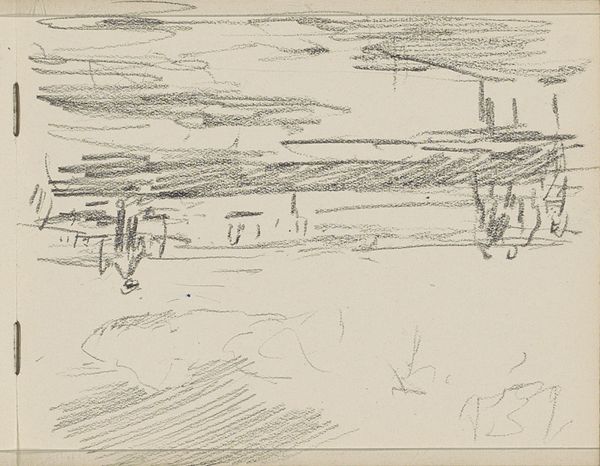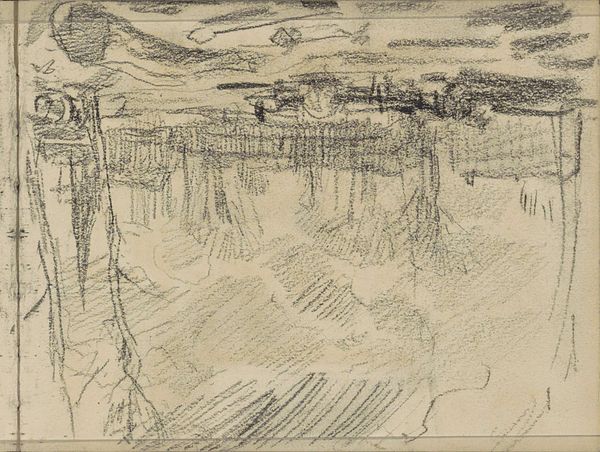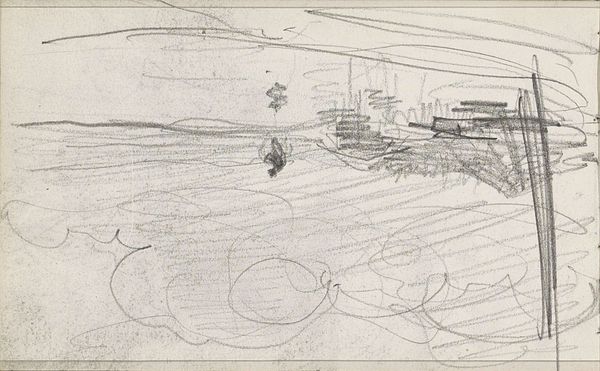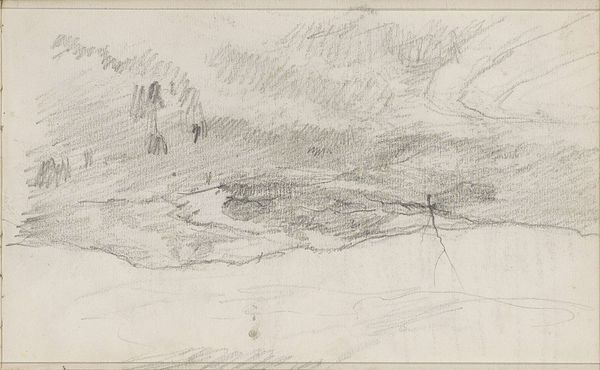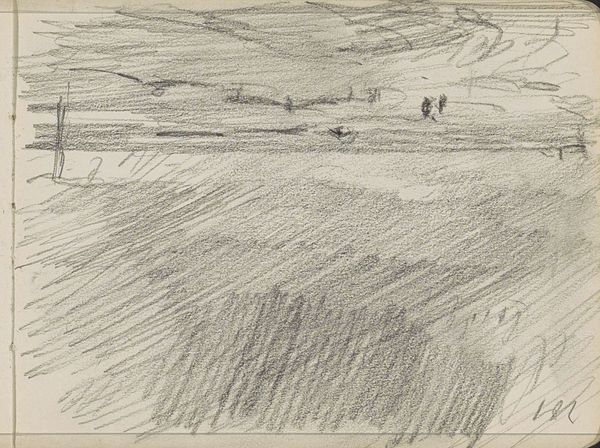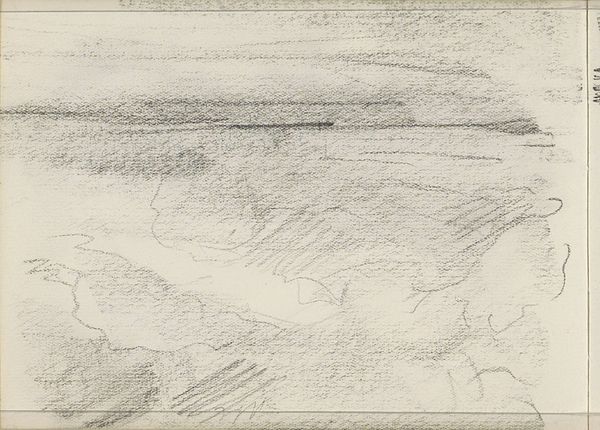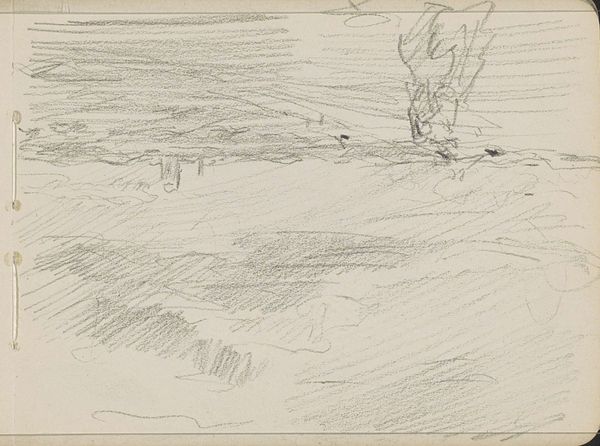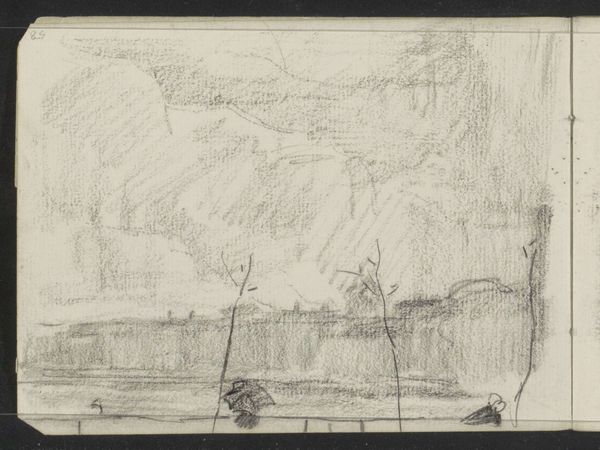
Copyright: Rijks Museum: Open Domain
Editor: This is "Strandgezicht met het Kurhaus te Scheveningen," a pencil drawing created sometime between 1884 and 1927 by Johan Antonie de Jonge. It's a quick sketch, almost impressionistic in its feel. I'm struck by the density of the marks, how they seem to capture the energy of the sea. What draws your eye to this work? Curator: Well, I'm immediately drawn to the materiality of the piece. The obvious use of pencil and paper, readily available materials, points to accessibility and a certain democratisation of artmaking. It speaks to a casual practice, an everyday engagement with the world. We often think of 'high art' being precious but here we have a deliberate demonstration to the contrary. What labour went into this seemingly effortless sketch, I wonder? Editor: That's an interesting point. I hadn't considered the labour involved in something that looks so spontaneous. Does the "everydayness," as you put it, devalue it in any way? Curator: Not necessarily. The perceived 'low' status of drawing, of sketching, actually challenges our notions of artistic hierarchy. We have to consider the social context in which de Jonge was working. What did it mean to produce and consume art like this, outside of the formal constraints of academic painting? Was this for himself, a record of what he observed in preparation for something more grand in scale and perceived worth? Or was this artwork, a study of material culture itself? Editor: So, the value lies in the process and the implied critique of established norms, not just the image itself. Are the pen and the pencil revolutionary tools in this context, instruments to enable different viewpoints of the world, perhaps a study in perspective beyond mere visual representation? Curator: Precisely. Think of the means of production: accessible, portable. The labour isn't about painstaking detail, but about observation and capturing a fleeting moment, implying freedom for the masses who may engage with their worlds. The focus shifts from the grand narrative to the individual experience and the easily-shared commodity of a sketch. Editor: That changes my perspective on the drawing entirely. It's less about the specific beach scene and more about what it represents about artistic creation. I guess this is what makes the practice so unique. Curator: Indeed. And it invites us to reconsider how we value art based on its materiality and its relationship to societal norms.
Comments
No comments
Be the first to comment and join the conversation on the ultimate creative platform.

